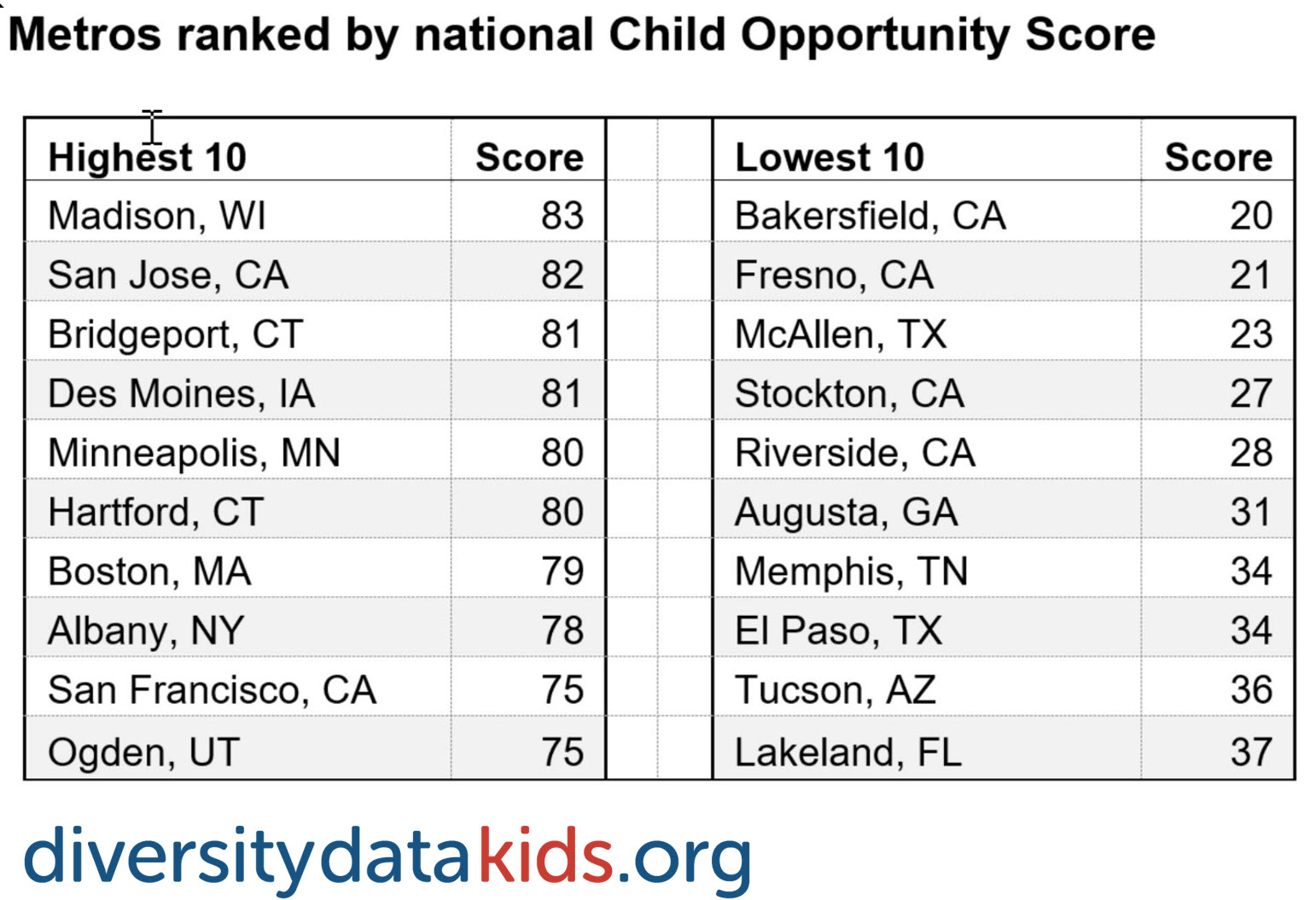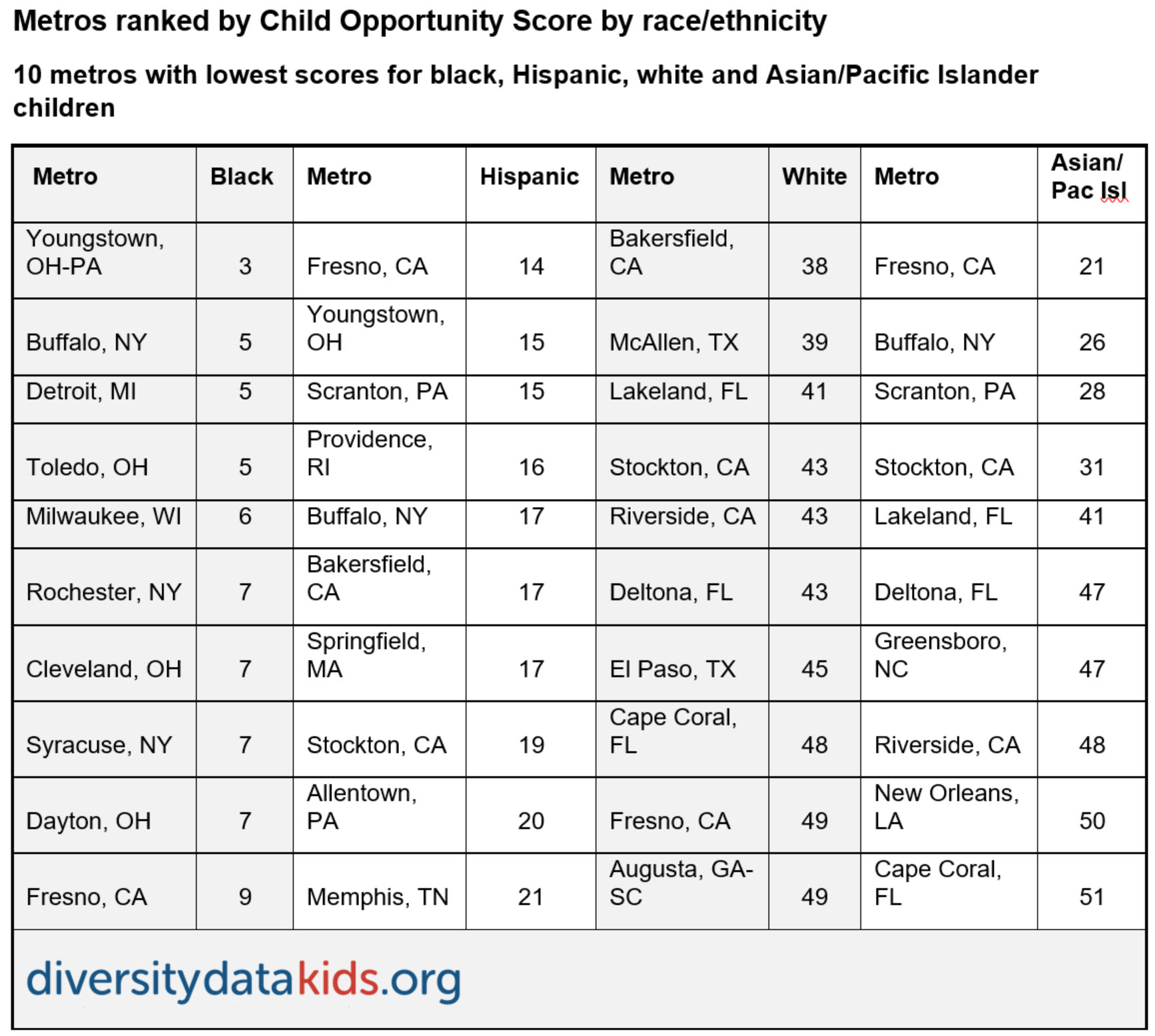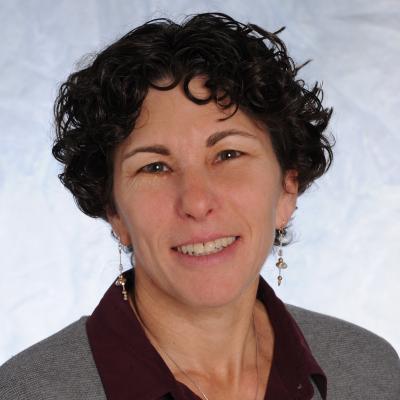diversitydatakids.org announces the Child Opportunity Index 2.0
Brandeis University’s Child Opportunity Index 2.0 Reveals Pervasive Geographic and Racial Inequities in Neighborhood Opportunity for Children Nationwide
Lower neighborhood opportunity is associated with shorter life expectancy
Waltham, M.A., January 22, 2020—New research shows that children’s access to neighborhood conditions that promote their health and development varies widely across the United States. The research also shows that a child’s race or ethnicity strongly predicts whether he or she lives in a place with access to good schools, healthy foods, parks and playgrounds, and living-wage jobs. Brandeis University’s updated Child Opportunity Index (COI 2.0) shows that black children are 7.6 times more likely than white children to live in neighborhoods with substantially lower opportunity to grow up healthy, and Hispanic children are 5.3 times more likely than white children to live in neighborhoods with lower opportunity. In contrast, the majority of white and Asian/Pacific Islander children live in higher-opportunity neighborhoods.
The data rank neighborhoods by level of child opportunity from very low to very high in the 100 largest U.S. metropolitan areas, where two-thirds of children live. The COI shows vast inequities not only metro-by-metro, but also within metros. Children who live only short distances apart often experience completely different worlds of neighborhood opportunity that can influence how they develop and even how long they will live.
“The COI is unique because it provides for every U.S. neighborhood a consistent and current metric of whether children have what it takes to grow up healthy,” says lead researcher Dr. Dolores Acevedo-Garcia of Brandeis University. “This matters because the index gives us the ability to use contemporary data to identify child opportunity gaps and inform policy change that is needed to create more equitable neighborhood conditions so that all children can thrive.”
The COI 2.0 quantifies, maps, and compares neighborhood opportunity by looking at 29 neighborhood conditions—such as proximity to and enrollment in early care and education centers, high school graduation rates, high-skill employment, health insurance coverage, housing vacancy rates, and poverty levels—that matter for children. The data, which cover conditions within three areas: education, health and environment, and social and economic, are used to compare metros by their level of opportunity and to see whether children have equal access to neighborhood opportunity by race and ethnicity.
Key Findings
- There are vast differences in child opportunity across the United States. Madison, Wisconsin, ranked first among all U.S. metros for neighborhood opportunity (Child Opportunity Score of 83). Virtually no children of any race live in very low-opportunity neighborhoods there.
- Bakersfield, California, ranked last of all U.S. metros for the opportunities that it affords children (Child Opportunity Score of 20); Fifty-one percent of children live in very low-opportunity neighborhoods. The report provides a Child Opportunity Score for each of the 100 largest metros. Please see the end of the press release for lists of the best and worst opportunity metros for white, black, and Hispanic children.
- With few exceptions, metros in the southern portion of the country have notably lower opportunity scores than those in the northern portion. The highest opportunity metros are in the Plains states and in New England; California’s Central Valley and a couple of metros in Texas have some of the lowest-opportunity neighborhoods for children.
- The report also found low neighborhood opportunity is associated with lower life expectancy and lower economic mobility. In fact, across all metros, there is a seven-year difference in life expectancy at birth between very low-opportunity neighborhoods (75 years) and very high-opportunity neighborhoods (82 years). In some metros, the gap in life expectancy between very low- and very high-opportunity neighborhoods is even more extreme. For example, in Dayton, Ohio, the life expectancy gap is 10 years.
- Even in metros with high overall opportunity, the Child Opportunity Scores for black and Hispanic children are substantially lower than for white and Asian/Pacific Islander children, showing a deep racial/ethnic divide in children’s access to neighborhood opportunity. Nationally, about 60 percent of both black and Hispanic kids live in low- or very low-opportunity neighborhoods compared to about 20 percent of white and Asian/Pacific Islander children.
- Neighborhood opportunity for children is associated with economic mobility as an adult. Household income at age 35 for children who grew up in poor families ranges from $29,000 in very low-opportunity neighborhoods to $45,000 in very high-opportunity neighborhoods.
Opportunity Hoarding and Sharing
The COI report also scores metros on their opportunity gap or whether they “hoard” opportunity or “share” it. Take Detroit and Colorado Springs, for example, which have the same overall Child Opportunity Score (55). However, the Child Opportunity Score for children in very low-opportunity neighborhoods is much lower in Detroit (2) than in Colorado Springs (24). Children who live in very low-opportunity neighborhoods in Detroit are less likely to benefit from the metro’s overall resources and are being left behind, whereas children in very low-opportunity neighborhoods in Colorado Springs have better access to the metro’s overall resources.
“This report presents compelling data for action on behalf of children,” said La June Montgomery Tabron, president and chief executive officer of the W.K. Kellogg Foundation. “With the right neighborhood conditions, a child’s potential is limitless. The Child Opportunity Index shows we’re missing the mark for children of color in too many communities. I’d like to see leaders across the country—at every level and in every sector—tap into this data and work together to make every child’s neighborhood one of equitable opportunity.”
“All children deserve the opportunity to thrive. The Child Opportunity Index shows us that where a child happens to be born can dramatically impact their entire life,” said Richard Besser, MD, president and CEO of the Robert Wood Johnson Foundation, which supported the research. “The index shows us where we need to invest if we truly care about equity and justice. We need to look at the policies and systems that have led to these disparities and work to change them so that all children and families are valued equally.
The Child Opportunity Index 2.0, funded by the Robert Wood Johnson Foundation and the W.K. Kellogg Foundation, is available at www.diversitydatakids.org.
###
About Brandeis University
Brandeis University was founded in 1948 by the American Jewish community at a time when Jews and other marginalized groups faced discrimination in higher education. Today, Brandeis is a leading research university for anyone, regardless of background, who wants to use their knowledge, skills and experience to improve the world. Nearly 6,000 Brandeis students and 550 faculty members collaborate across disciplines, interests and perspectives on scholarship that has a positive impact throughout society. Learn more at brandeis.edu.





